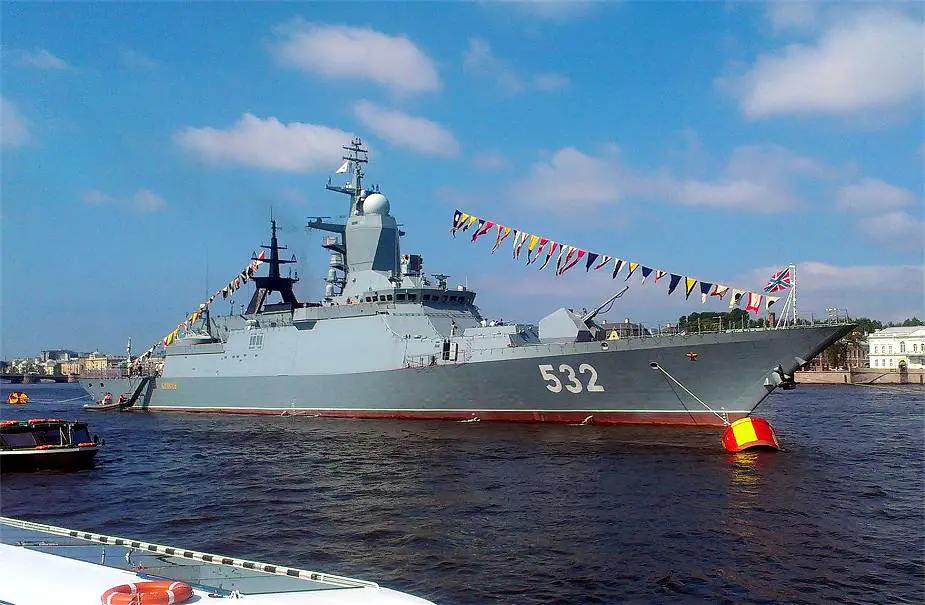Breaking news
Russian Navy Boikiy Steregushchy-class corvette conducts exercise using Uran anti-ship missile.
According to information published by the Russian press agency TASS on September 15, 2020, the Russian Navy Boikiy corvette (NATO reporting name: Steregushchy-class) has performed simulated missile launches against a notional enemy’s surface ships with the use of the Uran (SS-N-25 Switchblade) anti-ship missile system during a planned exercise at Baltic Fleet sea ranges.
Follow Navy Recognition on Google News at this link
 Russian Navy Bojkij Steregushchy-class corvette in St. Petersburg on Neva River. (Picture source Wikimedia)
Russian Navy Bojkij Steregushchy-class corvette in St. Petersburg on Neva River. (Picture source Wikimedia)
The Boikiy is a Steregushchy-class corvette of the Russian Navy, the third ship of that class. She was laid down in July 2005 and was launched on 15 April 2011. The corvette was handed over to the Russian navy on 14 May 2013.
The Steregushchy Class or Project 20380 corvettes is a multirole vessel built by the JSC Severnaya Verf shipyard and Amur Shipbuilding Plant for the Russian Navy to replace the Grisha Class corvettes.
The Steregushchiy-class corvettes have a steel hull and composite material superstructure, with a bulbous bow and nine watertight subdivisions. They have a combined bridge and command center, and space and weight provision for eight SS-N-25 missiles. Stealth technology was widely used during construction of the ships, as well as 21 patents and 14 new computer programs.
The Boikiy corvette is armed with one Arsenal A-190 100mm naval gun, two machine gun mountMTPU pedestal 14.5 machine gun, 32 9M96E/M or 9M100 air defense missiles, eight 3M24 Uran anti-ship missiles, two AK-630М CIW, and eight 330mm torpedo tubes.
The Uran (SS-N-25 Switchblade) is a Soviet turbojet subsonic cruise anti-ship missile. It is designed for destroying surface warships with the displacement of up to 5,000 tonnes and sea-going transport vehicles. Missiles are launched from cylindrical containers. These containers are fixed at a 35° inclination. Packs of 2 or 4 containers are used, depending on the vessel. The latest variant has an operational range of 300 km.


























